Kundapur Masala Powder
Note: This post contains affiliate links. As an Amazon Associate I earn from qualifying purchases.
Cut your cooking time for Mangalorean dishes substantially by making Kundapur masala powder ahead of time. This spice blend or masala is what goes into most vegetarian as well as non-vegetarian Mangalorean dishes.
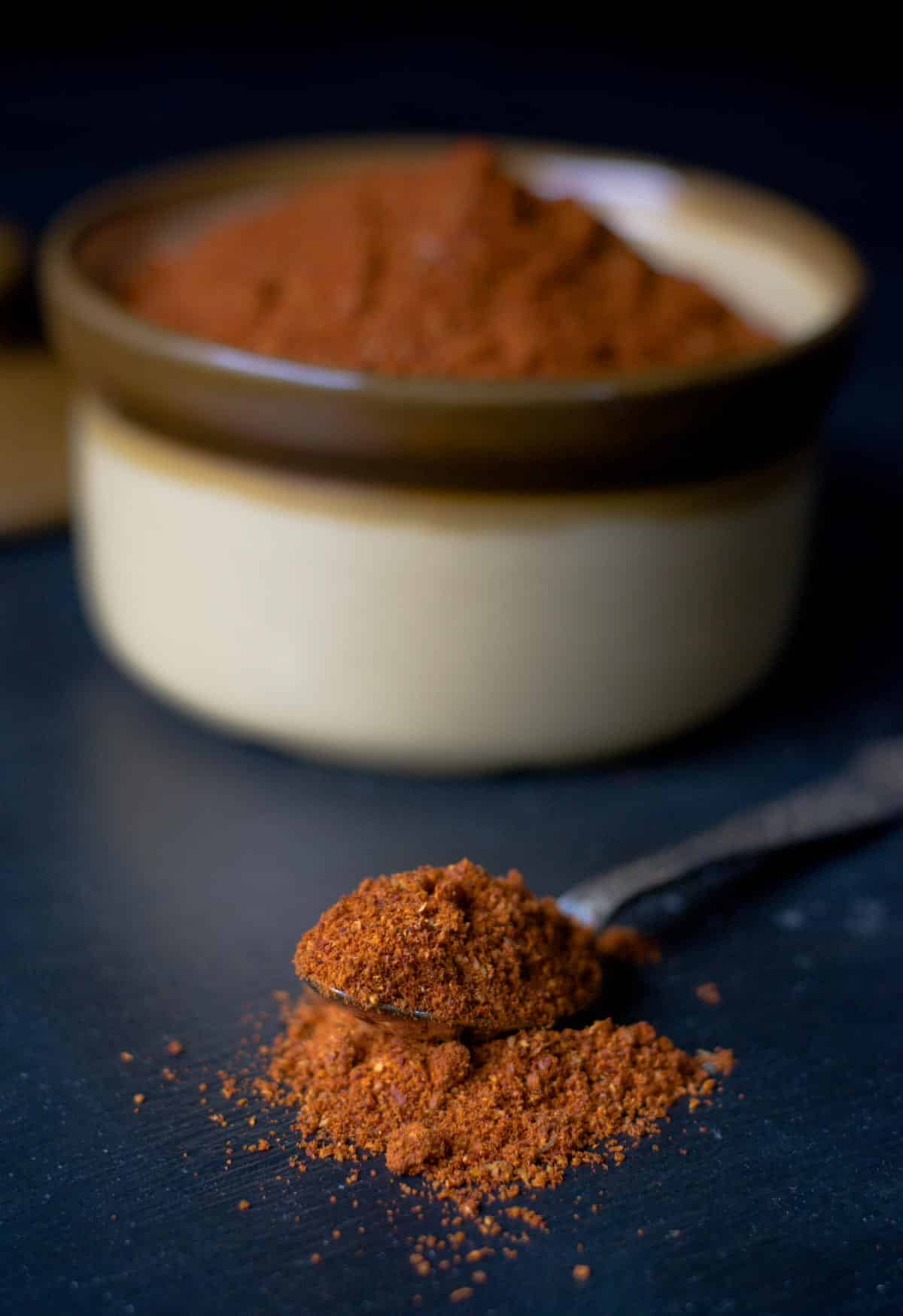
Welcome to the world of Mangalorean cuisine!
For those new to Mangalorean food, I will start with a quick 101, and you will soon know why Kundapur masala or Kundapur taal powder (alternate name) is so important to Mangalorean cooking.
What exactly is Mangalorean cuisine?
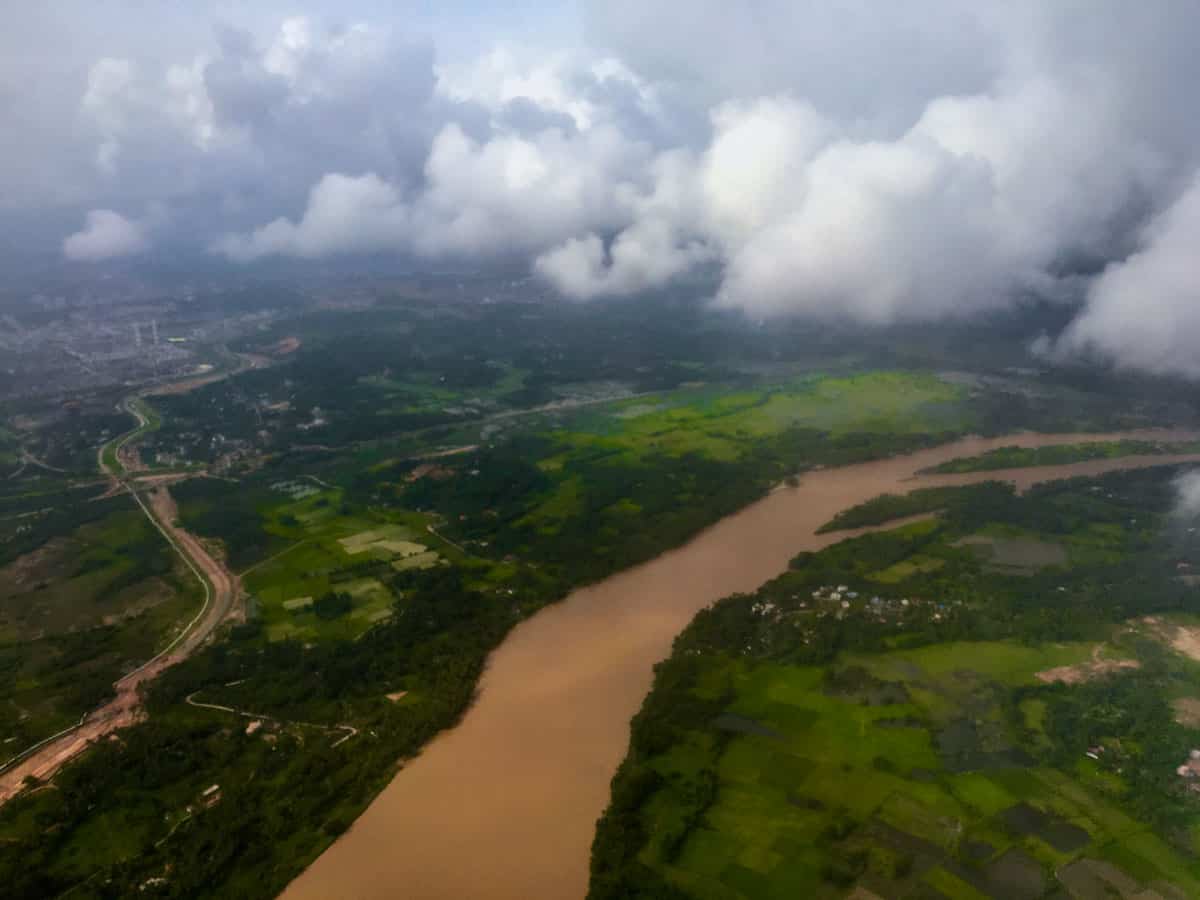
In the southern part of India, in the state of Karnataka, lies a beautiful coastal city called Mangalore, lined by coconut trees and bounded by the Arabian Sea to its west and the Western Ghats to its east.
Mangalore is a potpourri of people hailing from different ethnic communities, such as Bunts, Mogaveeras, Billavas, Goud Saraswat Brahmins, Mangalorean Catholics, and the Bearys. The cuisine of these communities is collectively known as Mangalorean cuisine.
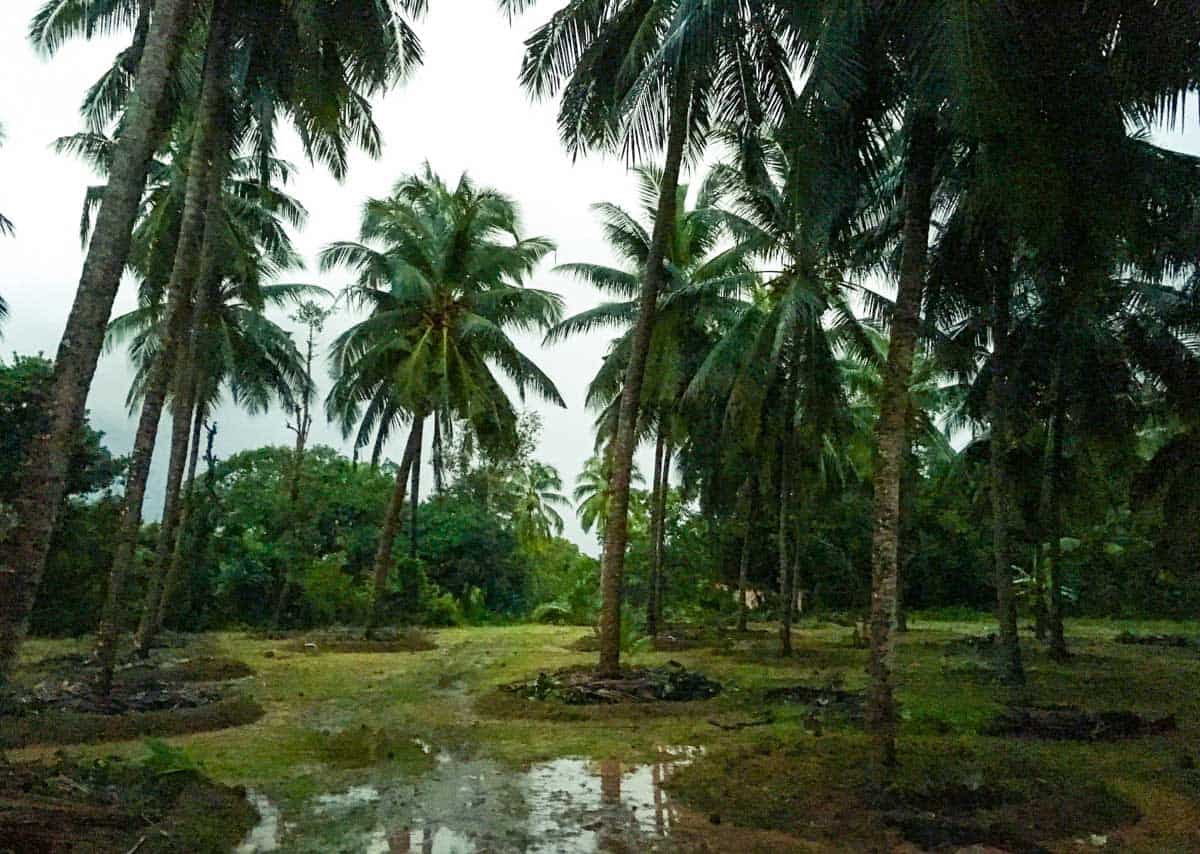
While each community has its specialty dishes, this blog primarily focuses on the recipes from the Bunt community (which I hail from). Kori Rutti (chicken curry), Meen Gassi (fish curry), Neer Dosa (Rice crepes), Bareda kai ajadina (Raw plantain dish) are some of the popular dishes from the Bunt community.
What’s common between all these dishes is the fact that they all use the same basic spices such as Byadgi chilies, coriander seeds, cumin seeds, black pepper seeds, and fenugreek (methi) seeds. Mangalorean dishes can be time-consuming to make because these spices need to be roasted and allowed to cool down before being ground into a fine masala or paste, along with other ingredients such as onions, tomatoes, garlic, etc.
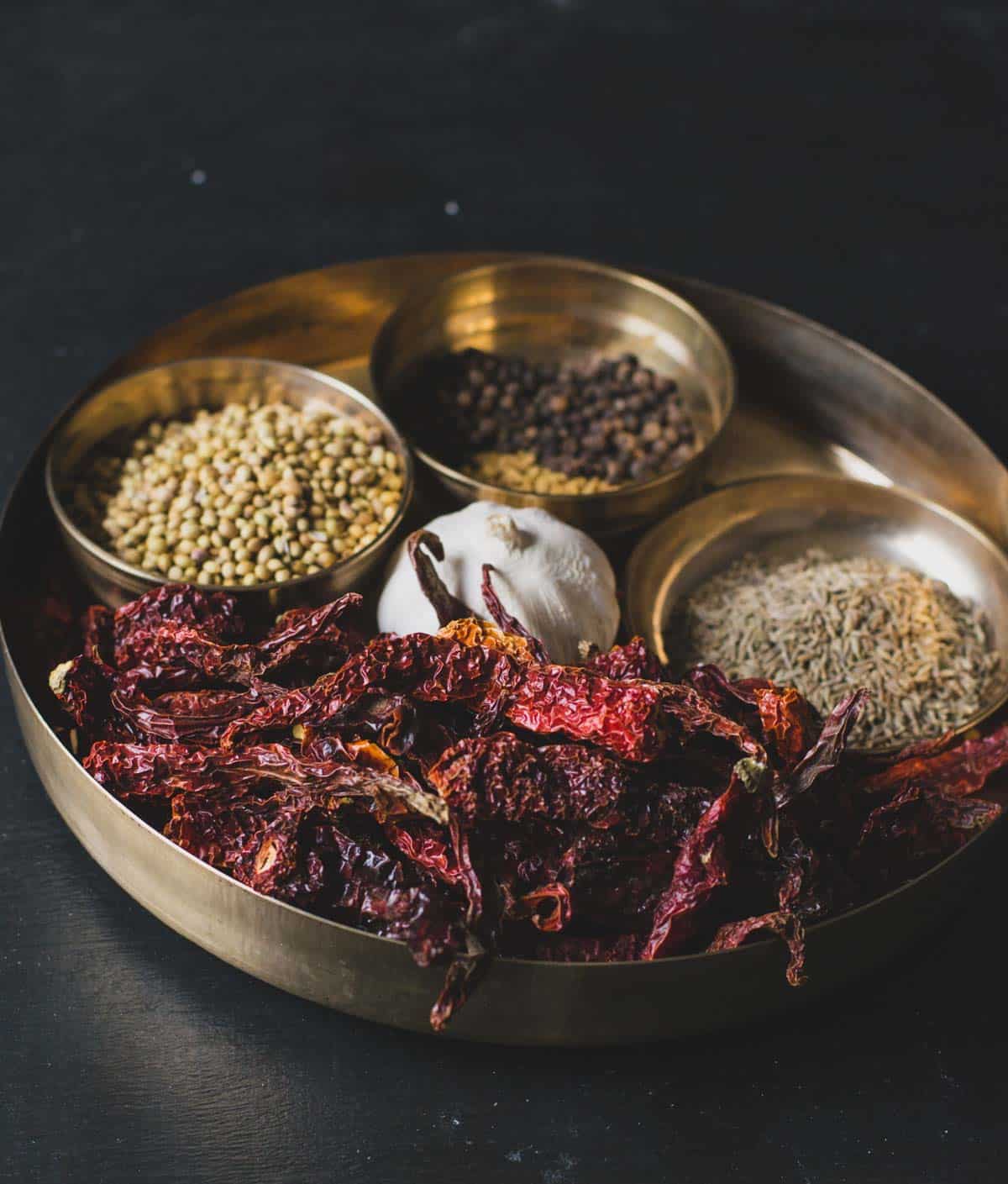
While my grandmom used to make this masala from scratch before every meal, busy, working women from my mother’s generation devised a way to make this spice blend ahead of time so that they could make Mangalorean food without spending as much time. That tradition continued with my generation as well. In fact, during my initial years of marriage, my mother-in-law and my mother would give me a good year’s worth of supply of homemade Kundapur masala every time I took a trip to India. After a few years, I started making my own as I grew confident in my culinary skills.
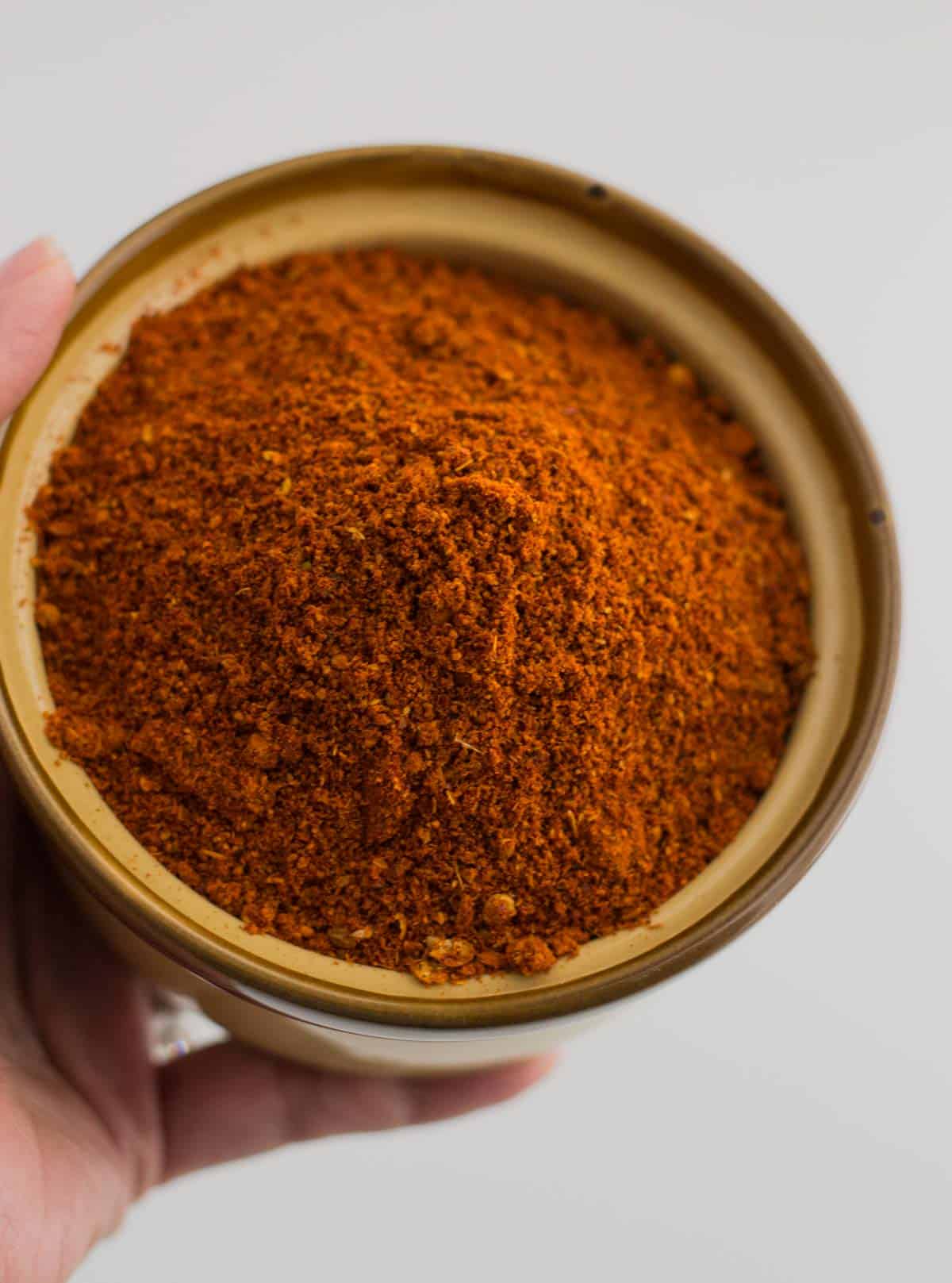
Why the name Kundapur Masala?
Kundapur is a coastal town in Karnataka, from which this recipe originated, hence the name. While this recipe originated from the Bunts community, the Mangalorean Christian community also has their version of this masala, called Bafat masala powder. Bafat masala and Kundapur taal masala are often used interchangeably.
Mangalorean recipes that use this masala powder
- Kori Gassi (Mangalorean chicken curry)
- Kori ajadina or chicken sukka (Dry chicken dish)
- Shrimp Ajadina (Dry shrimp/prawn Curry)
- Yeti Gassi (Shrimp curry)
- Baredakai Ajadina (Dry plantain dish)
How to make Kundapur masala powder
Note – This recipe uses dehydrated garlic cloves. Feel free to skip it and add garlic to this mix later when you are making your dish. To dehydrate garlic, roast the unpeeled garlic cloves in a pan on medium to low heat until crisp.
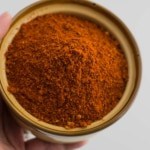
Bunts Style Kundapur Masala Powder
Ingredients
- 60 byadgi chilis roughly 6 fistfuls
- 6 tablespoons coriander seeds dhania
- 2 tablespoons cumin seeds jeera
- 2 teaspoons fenugreek seeds methi
- 2 teaspoons whole black peppercorns
- 2 tablespoons coconut oil
- 10 garlic cloves dehydrated and unpeeled, optional
Instructions
- Heat oil in a medium-sized pan and at medium heat.
- Add chilies to it and roast them till an aroma emanates from it.
- Remove the chilies and keep it aside.
- Then roast remaining ingredients (coriander seeds, cumin seeds, pepper seeds, and fenugreek seeds) for a minute or till it turns aromatic. Set it aside to cool it down (for approximately 10 minutes)
- Transfer them to a blender along with the chilies and dehydrated garlic cloves and grind them to a fine powder. Store it in an airtight container for future use.
- Note: To dehydrate garlic, roast the unpeeled garlic cloves in a pan on medium to low heat until crisp.
Disclaimer: Approximate nutritional information is provided as a courtesy and can vary depending on the exact ingredients/brands used. If you have health issues, please work with a registered dietician or nutritionist.
